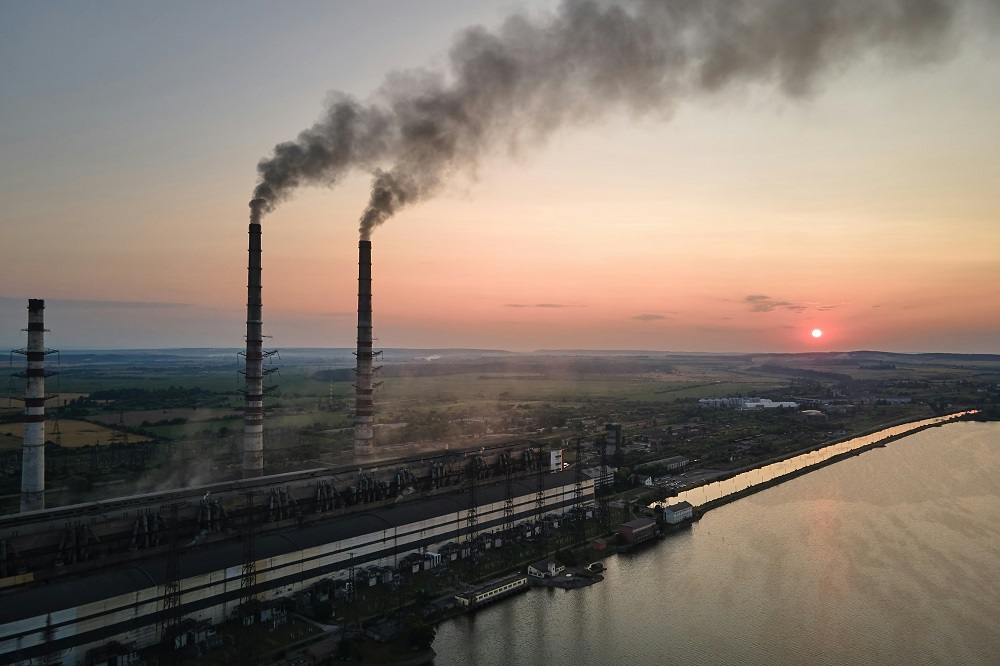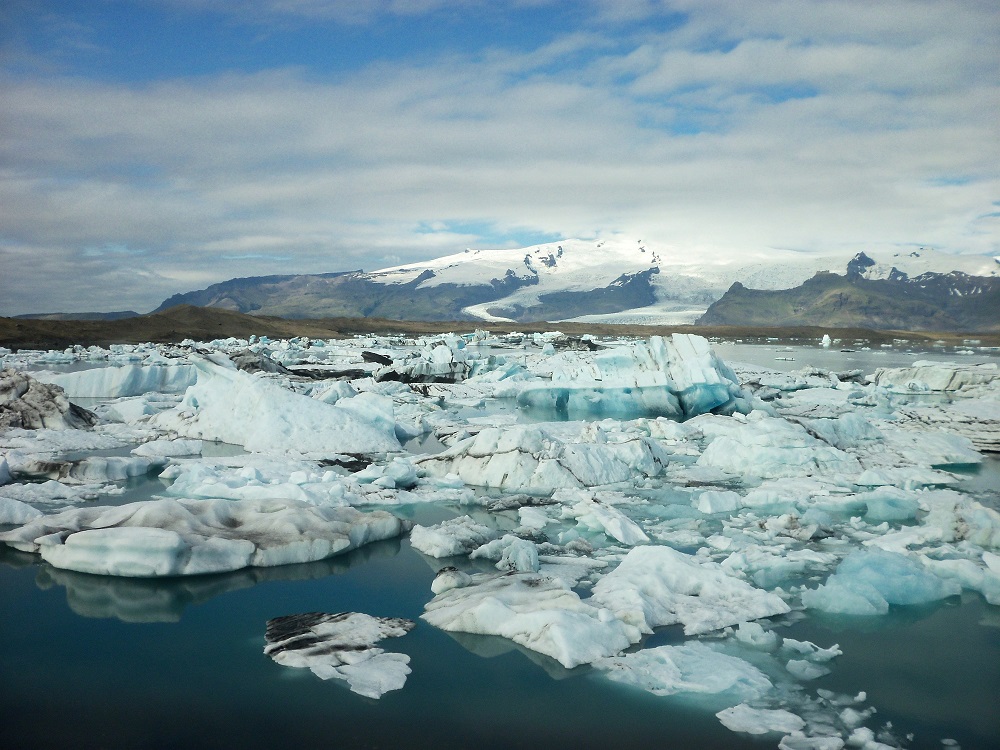The climate change processes of the earth are complex and depend on many external and internal factors, natural and artificial. Among these, the albedo effect is of great significance but is frequently overlooked. The term albedo simply means the fraction of solar energy that the Earth’s surface can reflect, and it is important for the bigger picture of climate change. This article covers the albedo effect in detail, including its impact factors on climate change and the factors that limit the effect of the phenomenon.
What is the Albedo Effect?
The albedo effect explains how much sunlight gets reflected from the surface of the earth. The term comes from the Latin word ‘whiteness,’ which is why the word albedo describes the ability of some objects to reflect the incoming light, where 0 and 1 are the lowest and the highest values, respectively. The 0 value corresponds to a surface where all the incoming sunlight gets attracted, such as deep oceans, dense vegetation, etc. The 1 value, on the other hand, corresponds to a surface that reflects sunlight entirely, for example, ice or freshly fallen snow.
Albedo Effect
Albedo Effect has been identified as a crucial component that controls the energy that is absorbed and lost into outer space by the Earth. This relationship of absorption and reflection has great significance in the climate of the earth. Clean albedo surfaces, such as ice sheets, glaciers, and deserts, contribute to the cooling effect of the Earth as they reflect a huge fraction of the solar radiation that approaches the Earth. On the other hand, surfaces with negligible albedo, such as the seas and thick forests, soak up almost all the sunlight film and cause more heat in the environment.
Temperature regulation on a local and global level in terms of geographical effects is influenced by the albedo effect as well. For instance, the cold areas with snow covering remain cooler for prolonged periods because snow has a high albedo property, which allows it to reflect away a lot of the energy coming from the sun. On the other hand, when snow or ice melts, the darker ground or water beneath is exposed, and heat is then absorbed, leading to further warming.
Factors Influencing the Albedo Effect and Climate Change
The albedo effect, as well as its relevance in climate change, is modified due to numerous natural and human-related factors. Here are a few of them:
-
Surface Composition
Earth’s surface is covered with a diverse range of substances in terms of albedo values. High albedo materials such as snow, ice, deserts, and other shiny surfaces effectively reflect sunlight. Low albedo areas such as oceans, gardens, and cities with tar and dark rooftops are not as reflective as the areas mentioned above and heat more. Various land use changes, such as deforestation or urbanization, may fundamentally change the regional albedo and affect the climate.
-
Ice and Snow Cover
Ice and snow rank as some of the most reflective chloride composite surfaces, which are critical in balancing Earth’s energy level. With climate change mainly caused by human activities, the emission of combustibles, ice, and snow cover in the cold regions is melting. This makes the average value of albedo less and causes the Earth to gain heat, which fast-tracks climate change. Feedback, which is commonly called “The ice-albedo feedback,” not only keeps superficial temperatures low but also promotes further warming.
-
Cloud Cover
Another factor that contributes to the processes of the earth’s radiation absorption and dissipation is cloud coverage. Like other surfaces, clouds are also light elements and have high reflectance short wave factors; a large portion of the light is reflected. The situation is rather difficult to analyze when it comes to clouds and their contribution to the albedo effect and global warming. Different clouds have different actions. Persistent, low-lying clouds with higher particulate concentrations lead to cooling due to increased reflection of sunlight as opposed to scattered, high, thin cirrus clouds, which lead to warming through heat retention.
-
Human Activity And Urbanization
Just like the vegetation cover, human activities have a great effect on the albedo effect of climate change. Urbanization and industrialization usually transform natural terrains into synthetic, lower albedo, and heat-absorptive terrains. Due to this reduction in vegetation cover, urban areas suffer from the so-called “urban heat islands” effect, where cities are much hotter than surrounding rural areas. Land use for agriculture or changes in land use for forestation.

-
Aerosols and Air Pollution
Some aerosols, like sulfuric acid vapors, which are released upon volcanic eruptions and man-made pollution, enhance the albedo of our planet. This is beneficial in moderation as it tends to cool the earth. On the other hand, black carbon, also known as soot, produces heat. It covers the glacier or the snow and reduces the amount of sunlight reflected away from the earth, and all the ice that is affected, including the great ice caps, melts away faster; all of this is harmful to the environment.
Read more: The Intersection of Digital Transformation and ESG for Sustainable Innovation
-
Vegetation and Changes in Land Use
While vegetation is a great absorber of sunlight, it tends to have a cool to moderate effect within the climatic zones. The vegetation types also determine the albedo of the location, and due to this presence, the presence of snow cover is restricted. Compared to deserts, forests normally possess a higher albedo and, therefore, adverse albedo. Such agricultural activities in climatic change terms are known as land use or land cover change as they alter the albedo of a region, enabling more heat to be retained and hence contributing to regional and global warming.
The Albedo Effect’s Role in Climate Change
The albedo effect is one of the factors that are significant in global warming. The moment there is a change in albedo, the temperature of the earth will be directly affected. This is how the albedo effect affects global warming:
-
Melting Ice and Rising Temperatures
The greenhouse effect is the main reason global warming occurs, and as a consequence, all climatic regions become more and more heated. Because of this, the polar areas are now warming up at a higher rate than other parts of the globe. In turn, ice and snow in some of these regions can collapse, thereby decreasing the preceding albedo property of that region. The more the ice melts, the more the dark ocean water, which now absorbs more heat and enhances the melting process. Due to this positive feedback cycle, the poles become more prone to the sides of global warming.
-
Urban Heat Islands
Dark building surfaces and no greenery in cities allow them to retain heat more than in rural areas. These so-called “urban heat islands” are zones in cities where temperatures are much higher than in the rural areas surrounding them. The lower albedo of the cities also aggravates the heat island effect and contributes to global warming and climate change at the metropolitan and global levels. Climate change, coupled with rapid urbanization in the world, has made the urban heat island effect more pronounced in recent times.
Read more: Why Are Big Corporations Abandoning their Climate Commitments Quietly?
-
Changes in Land Use
Droughts or farming are human-induced actions that have changed the albedo surface of the earth. The problems of cutting down forests in the tropics, for instance, are twofold:
- Fewer trees take in carbon dioxide, which causes the greenhouse effect.
- It alters the pelvic surface, which in turn alters the amount and angle of the sun’s light, which is absorbed and bounced off.
As many of the world’s natural forests are turned into agricultural fields, walls, and pavements, the ability of the earth to control CO2 levels is diminished, but the albedo effect is broken, and global warming emerges.
-
Α Locus of Global Feedback Loops
The albedo effect is one of a number of feedback loops that act to enhance the rate of climate change. While the temperature keeps increasing, ice melts down, albedo grows smaller, and greater amounts of heat are absorbed. This creates more and more warming and more and more ice that melts away. As these feedback loops come into play, they make it hard for one to quelch the effects of climate change as they are self-opening doors to reinforcing loops.

Mitigating the Impact of the Albedo Effect Climate Change
Albedo effect is one of the contributors to climate change, but its effects can be lessened. Here are some strategies that people can work on to help change the effects:
-
Safeguarding the Polar Ice Caps
A great deal of the albedo effect can be reduced through conservation of polar ice caps. It is easy to see how activities of reducing pollution by greenhouse gases or using non-fossil-based forms of energy and restricting how much temperature goes up will reduce the amount of ice from melting in the Arctic and Antarctic regions. Clearing up these ice-buried parts will help preserve their high albedo and prevent excessive warming.
-
Urban Design and Green Spaces
Increasing the albedo of urban settlements can lessen the amount of manmade contributions to climate change. Using reflective roofing materials, light-colored pavement, and creating more greenery may help reduce heat retention. Greenhouses and green spaces also bring cooling to cities by raising albedo and providing shade.
-
Sustainable Agriculture & Forestry
The usage of land has a contribution to the albedo effect. Better agricultural methods and increasing greenery through seeding and planting trees can also raise the albedo of the Earth. In-house health and conservation of trees and forest cover ensures that trees soak up more sun rays and assist in cooling down the regions and causing less climate change.
-
Geoengineering Solutions
The risk of climate change is so great that some scientists suggest trying more radical means, such as using geoengineering techniques, which raise the albedo of the Earth. For example, one manufacturer has proposed spraying ‘high albedo’ aerosols into the atmosphere in order to increase the amount of sunlight that will be reflected in space instead of bouncing back on Earth. But these are all still ideas and have not yet been implemented due to practicalities and aftermaths.
-
Reducing Black Carbon Emissions
Reduction of black carbon emissions also provides a way out of this albedo effect. It is common knowledge that when snow and ice are covered with different dark items resulting from fossil fuel combustion, their albedo decreases and facilitates quick melting. The black carbon emissions can be reduced by using cleaner energy sources, using better technologies for fuel combustion, or employing more pollution control devices.
Conclusion - Albedo Effect and Climate Change
The albedo effect plays a critical role in the maintenance of the climate system. It affects the amount of sunlight that hits the earth’s surface and is reflected or absorbed, making temperature variations among the earth's bodies. There are alterations in the albedo effect induced by melting glaciers, urbanization, deforestation, and pollution, which contribute greatly to the increasing rate of climate change.
It is crucial to know how albedo interacts with climate change to be able to come up with plans that would mitigate this global warming. Preventing the loss of ice-covered areas, building advanced cooling systems in the cities, and restoring the balance in the environment seem to have promising effects in maintaining the stability of the earth’s albedo.
A leader in ESG Services, SG Analytics offers bespoke sustainability consulting services and research support for informed decision-making. Contact us today if you are searching for an efficient ESG (Environmental, Social, and Governance) integration and management solution provider to boost your sustainable performance.
About SG Analytics
SG Analytics (SGA) is an industry-leading global data solutions firm providing data-centric research and contextual analytics services to its clients, including Fortune 500 companies, across BFSI, Technology, Media & Entertainment, and Healthcare sectors. Established in 2007, SG Analytics is a Great Place to Work® (GPTW) certified company with a team of over 1200 employees and a presence across the U.S.A., the UK, Switzerland, Poland, and India.
Apart from being recognized by reputed firms such as Gartner, Everest Group, and ISG, SGA has been featured in the elite Deloitte Technology Fast 50 India 2023 and APAC 2024 High Growth Companies by the Financial Times & Statist.









